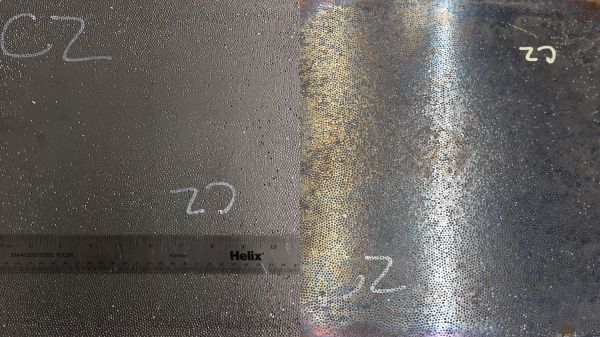North Carolina State University researchers have demonstrated that composite metal foams (CMFs) can pass so-called “simulated pool fire testing” with flying colors, moving the material closer to use in applications such as packaging and transportation of hazardous materials. In addition, researchers used this experimental data to develop a model for predicting how variations in the CMF would affect its performance.
Simulated pool fire testing is not a computational simulation. It’s an experimental test that materials must pass in order to be considered for use in manufacturing rail tank cars that transport hazardous materials. In simulated pool fire testing, a panel of material is exposed to a temperature of at least 816 degrees Celsius on one side for 100 minutes. A suite of thermal sensors rests on the other side of the panel. If those protected sensors register a temperature of 427 degrees Celsius or higher at any point during the 100 minutes, the material fails the test.
For their tests, the NC State researchers used panels made of steel-steel CMF. CMF is a foam that consists of hollow, metallic spheres – made of materials such as carbon steel, stainless steel or titanium – embedded in a metallic matrix made of steel, aluminum or other metallic alloys. “Steel-steel” CMF indicates that the spheres and the matrix were both made of steel.
Read more at North Carolina State University
Image: This image shows steel-steel composite metal foam samples before testing (left) and after 100 minutes exposure to 825C (right). CREDIT: North Carolina State University


